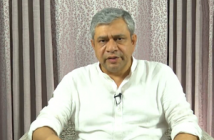By Nivedita Khandekar
New Delhi, July 28 (IANS) Seven people died, and more than a dozen were injured and several are still missing in a cloudburst incident in the wee hours of Wednesday in a remote village in Jammu and Kashmir’s Kishtwar area.
On Tuesday, Himachal Pradesh’s Lahaul Spiti district witnessed a similar cloudburst incident followed by flash floods at around 8 pm, leaving one dead and several missing.
The India Meteorological Department (IMD) had warned of extremely heavy rainfall in northwest India and the western Himalayan states for Tuesday, Monday and Thursday, but this forecast did not and cannot predict cloudburst incidents.
It is a very short term and highly localised phenomenon. Meteorologists define cloudburst when there is more than 100 mm rainfall in just one hour at a given location. There is also a new definition of mini cloudburst, which is more than 50 mm rainfall in two consecutive hours.
The new definition distinguishes the cloudbursts associated with high topography (e.g., the Leh event in August 2010; Uttarakhand event in June 2013) and rainfall incidences over the plain region exceeding 100 mm in one hour that can result in urban flooding, such as that in Mumbai in July 2005.
Unlike cyclones, forecasting a cloudburst is very difficult due to the dynamics of the rapidly developing clouds over a very small area, the IMD has maintained.
Agrees the Head of the Department of Earth Sciences, University of Kashmir, Shakeel Romshoo. In majority of the cases in the Himalayan region, cloudbursts happen in small valleys.
“Even with the doppler radar, it is difficult to predict as the doppler radars cannot ‘look’ into those small valleys unlike in plains where it can capture a large area,” Romshoo said.
Cloudbursts occur when copious amount of moisture is suddenly lifted vertically upwards, resulting in formation of massive clouds.
“The sudden updraft is usually due to a localised eddy combined with orographic lifting (very common in hilly regions). Eddies are swirling motion of fluids that allow intense mixing of dry and moist air. Depending on their strength, they could form massive, tall clouds,” said associate professor in the Department of Mechanical Engineering & Adjunct Faculty in IDP Climate Studies, IIT Bombay, Sridhar Balasubramanian.
Pointing out that the wind patterns are changing due to climate change and the change in wind patterns could, in turn, impact the dynamics of localised eddies that aid in cloud formation, Sridhar said, “Due to global warming, the air temperature is at least one degree higher than normal. Warm air can hold more moisture. Hence, we have more moisture in the air. These two phenomena are resulting in increased cloudburst events.”
IMD’s Pune office maintains data of all weather-related incidents across India. However, there is no separate database dedicated to cloudburst events.
“In view of increasing cloudburst events, we now plan to start maintaining such database,” a meteorologist from Pune said.
But there have been several studies in connection with cloudbursts.
The ‘Assessment of Climate Change over India 2020’ report released by the Ministry of Earth Sciences last year had documented several instances of cloudburst based on scientific papers.
In one such paper, studying the distribution of cloudburst and mini-cloudburst events over the Indian subcontinent during the period 1969-2015 based on the information from 126 station observations, scientists had found that on an average, the Indian subcontinent experienced 130 mini-cloudburst events and one cloudburst event per year.
During the Indian summer-monsoon season, there are 2-3 mini-cloudburst events witnessed along the Himalayan foothills, west coast of India, Indo-Gangetic Plains and Saurashtra, and as high as five such events are noticed over central India, it stated, adding that the onset period of monsoon typically witnesses more intense mini-cloudbursts (average rain intensities by 7 cm per event) prominent over the coastal regions of Gujarat and Odisha, and the northeastern parts of India.
Romshoo, however, disagreed with the claim about ‘increasing frequency’ of these incidents.
“Cloudbursts have been happening in the Himalayas for ages. It generally occurs in some small valleys, which in earlier days were not connected. So, the news come out very late. Many a times it would not even be reported. What has definitely increased now is the ‘reporting’ about cloudburst incidents. Technological advances such as mobile penetration in remote areas has made it possible to bring these phenomena to the fore,” Romshoo added.
The Indian subcontinent receives rainfall amounting to more than 6 cm from mini-cloudburst events during July-August, and these events have been observed to be very intense over the eastern part of the Indo-Gangetic plains during the withdrawal phase of ISM.
Although short-lived cloudburst and mini-cloudburst occurrences are generally projected to decline in frequency (not statistically significant at 5 per cent), it is observed that there is a significant increase in these events along the Himalayan foothills (1 per decade) and west coast of India (5 per decade), while decreasing over northeast India in the recent decades, the Assessment of Climate Change over India 2020 report had said.
–IANS
niv/arm




